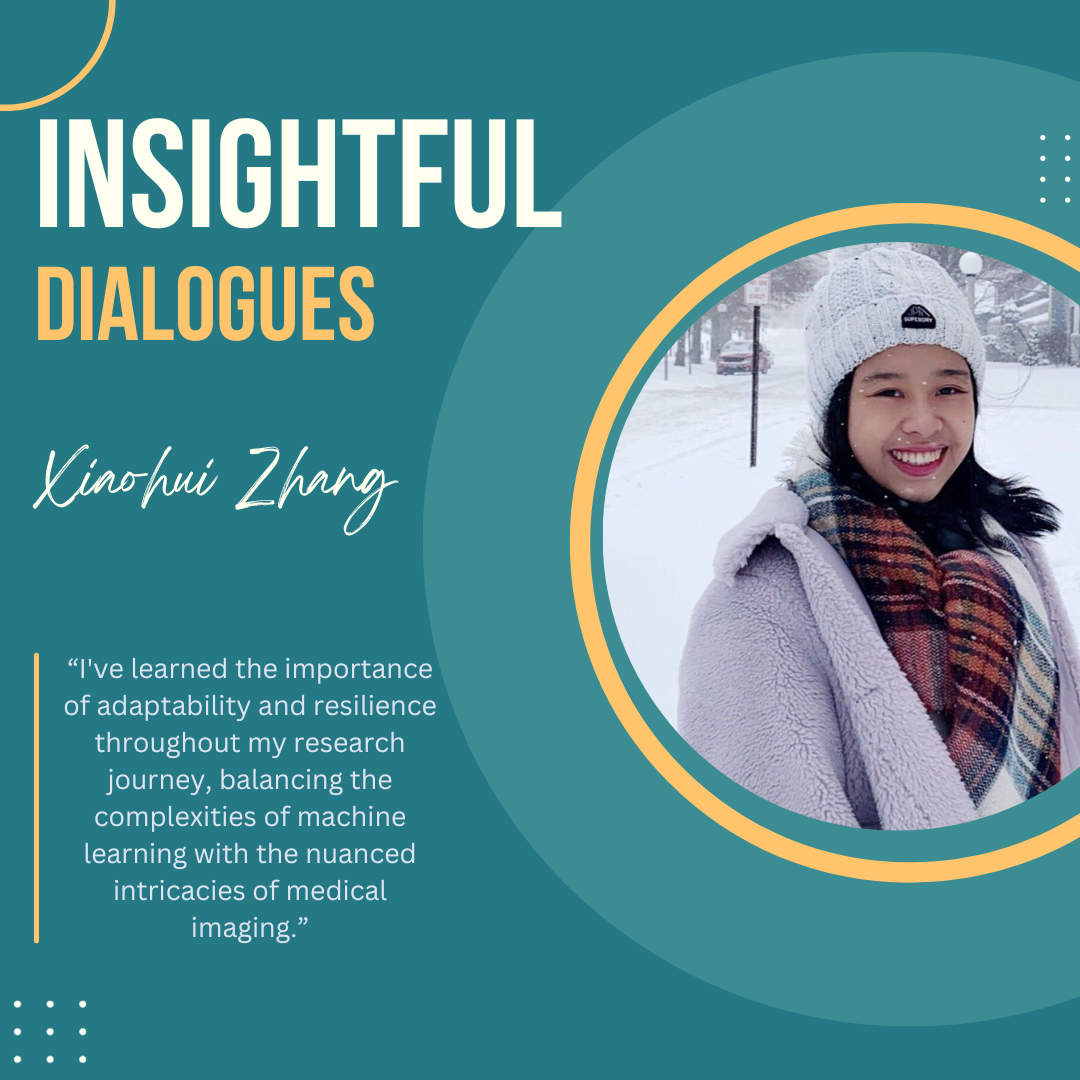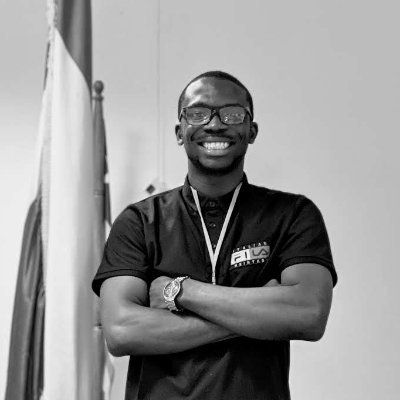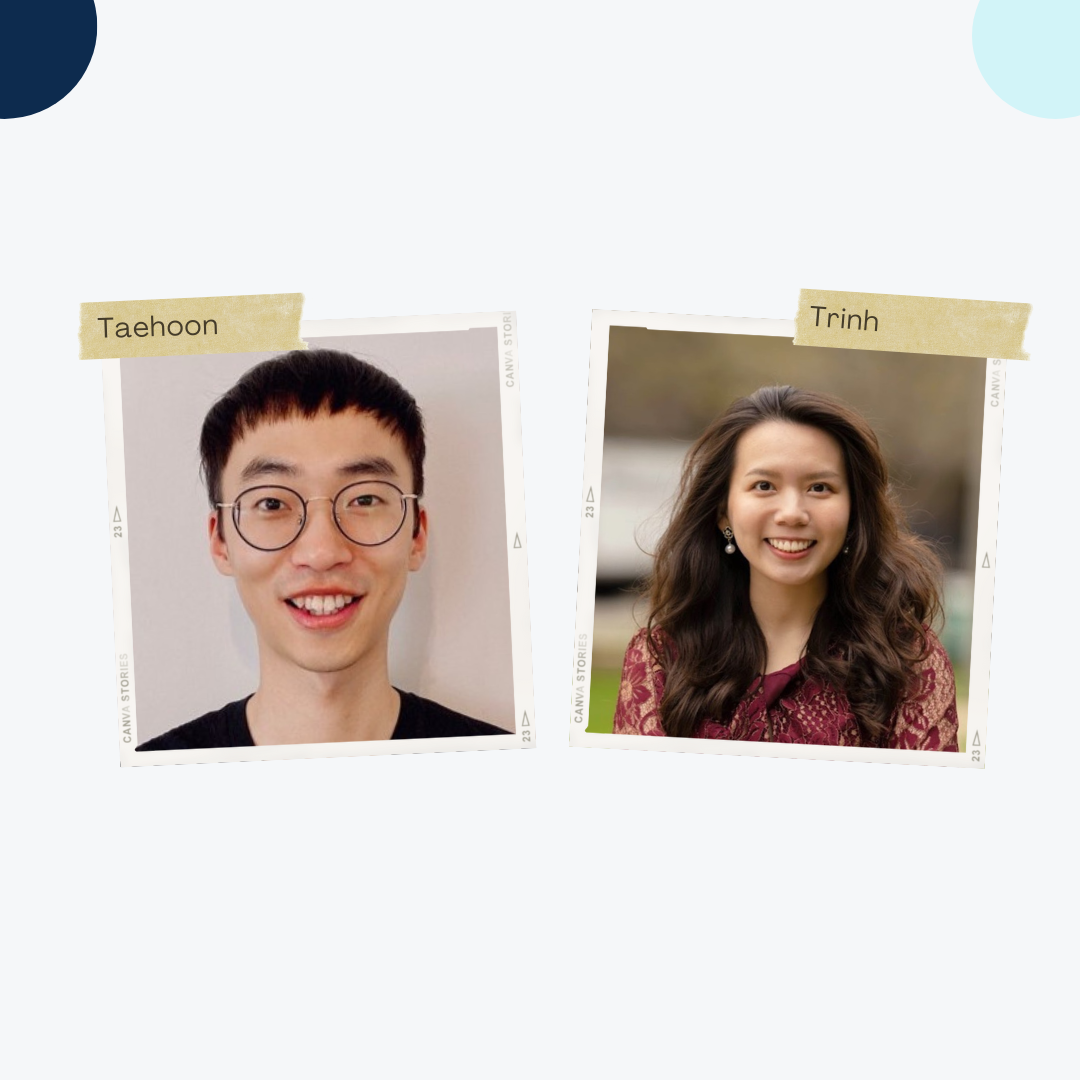
A Visionary's Journey: Xiaohui Zhang on Bridging AI and Neuroimaging
Navigating the Intersections of AI and Neuroimaging in Biomedical Engineering

In this episode of 'Lab Dialogue Series', we delve into the life and work of an inspiring researcher who has a compelling story to share about her journey in Biomedical Engineering.
Meet Xiaohui Zhang, a Biomedical Engineering final-year PhD candidate at the University of Illinois Urbana-Champaign, specializing in the pioneering field of Computational Imaging Science. Under the tutelage of Professor Mark Anastasio, she delves into the intricate world of neuroimaging, enhancing the potential of AI in biomedical applications. With a rich educational background in China, Xiaohui is on a quest to push the boundaries of medical imaging through her research and scholarly contributions.
Let's kick things off by understanding your motivation. Can you share a bit about your interest in Biomedical Engineering, specifically in AI, and what led you to pursue a Bachelor's degree in this field?
Xiaohui: My journey into Biomedical Engineering was unconventional. I was drawn to the field's blend of biology and technology, intrigued by the potential for real-world applications. The robust curriculum and hands-on lab work appealed to me, particularly as I sought to combine my love for biology with my interest in programming. It was during my undergrad in China, and later at the research-focused exchanged in the University of Michigan, that I found my calling in biomedical engineering and AI, which has shaped my academic pursuits ever since.
Your trajectory has been nothing short of inspirational. But I'm also curious about the cultural shifts you experienced, especially moving back to China and then again to the US. How did that influence your research and personal growth?
Xiaohui: Thank you for highlighting that. Moving between China and the US for my studies brought significant shifts, expanding my horizons and research opportunities. While challenging, it taught me the importance of adaptability, enriching my personal and professional life. The exposure to different research environments, especially my research-focused exchange in the US, was pivotal, affirming my decision to pursue a PhD in Biomedical Engineering
That's profound! Now, tell me more about the research you're currently involved in, especially related to neuroimaging and medical applications.
Xiaohui: In my research, I'm deeply involved in developing computational methods for non-invasive neuroimaging techniques, like wide-field calcium imaging. This cutting-edge work allows us to monitor neural activity in real-time, a significant leap from traditional methods like fMRI. We're exploring various states of consciousness and disease in mice, using genetically encoded calcium indicators for higher temporal resolution. Part of my thesis involves creating algorithms for classifying these image sequences and applying deep learning to unravel brain connections under different states. This innovative research is quite new and presents a thrilling frontier in biomedical engineering.
Can this technique be applied to humans, or is it specific to mice?
Xiaohui: Technically, wide-field calcium imaging is currently applicable only to mice. However, utilizing a mouse model is crucial to explore different types of brain diseases, given that invasive research on the human brain presents challenges. Techniques like fMRI don't always directly reflect neural activity, so investigating the underlying mechanisms in mice helps identify brain hubs or areas triggering certain diseases. Mice brains share similarities with human brains, offering translational opportunities in medicine if we can find cures in mice.
That makes sense. Whenever I attend conferences, I often ask scientists about their favorite and least favorite aspects of their research. What are your favorite and least favorite aspects of your research?
Xiaohui: I cherish the collaborative element in my research, especially with physicians and neuroscientists from varied fields. Interacting with people who don't just sit at a computer and are often involved in practical applications of research can provide beneficial feedback and sometimes mentorship for my career. However, a challenge arises when publishing work related to neuroscience, especially the AI part. There's often a significant gap between those who create the algorithms and those who practice clinically. Ensuring that our algorithms are not just accurate but also relevant to clinicians can be difficult, given our different focuses and sometimes divergent understandings.
Your publications have consistently been top-tier. That must be quite the experience!
Xiaohui: Yes, maintaining a high standard for every student is crucial. It's a learning process, especially early in the PhD journey, to understand what will meet these rigorous criteria. Although initially tough, it benefits me in various aspects of my work and even when transitioning into the industry. It can turn you into a stringent critic of others' work, but it imbues you with valuable standards that apply in various scenarios.
Moving onto your PhD journey - what has been the most challenging aspect, and how have you navigated through it?
Xiaohui: The most challenging time during my PhD journey was undoubtedly during COVID-19, due to isolation and the abrupt shift to remote work. That period didn't offer a boundary between professional and personal life, which was mentally taxing. Initial remote conferences and interactions lacked the depth and engagement of in-person events, which also took a toll. Managing work and mental health became paramount, and setting boundaries, like not working after certain hours or more than one day on the weekend, became crucial. Although I wouldn't want to relive that time, it taught me essential lessons about managing work, mental health, and establishing healthy routines without immediate supervision or in-person advice.
How do you balance the demands of your research with personal time and self-care?
Xiaohui: Balancing research and personal life is crucial. I prioritize my tasks to maintain productivity during work hours, which allows me to allocate time for relaxation and hobbies. Self-care is not a luxury; it's a necessity to sustain the intense focus required for PhD work. I ensure to have downtime for reflection and to enjoy life beyond the lab.
I read your first paper, the one about the impact of deep learning-based super-resolution on binary signal detection, and found it quite interesting.
Xiaohui: The work on that paper began pre-COVID. There was immense pressure during the COVID era. I collaborated and co-authored it with labmates. It was quite a stressful period, but I learned a lot, especially about handling relationships under stress. One good thing about that period was that my partner and I learned to accommodate each other better during that time, which I think was a valuable lesson.
What has been the most unexpected challenge you've faced during your research, and how did you overcome it?
Xiaohui: One of the most unexpected challenges was the sheer volume of data from neuroimaging studies. Initially, it was overwhelming, but I realized the necessity of developing efficient data processing strategies. I invested time in learning advanced computational methods and machine learning algorithms, which allowed me to distill meaningful patterns from the data. Overcoming this challenge has significantly enhanced the analytical aspect of my research.
By the way, can you share some important lessons you've learned, particularly about your academic and personal growth?
Xiaohui: In the last few years, I've started understanding my life's priorities. Being away from home for five years, especially in the US during the Trump administration's policies on student visas, was challenging. I had plans to reunite with my family, but the COVID outbreak ruined them. The situation taught me the importance of family. My parents are aging, and I want to be there for them whenever they need me.
That was profound. The essence of what family means, as you described, hits hard. Thank you for sharing.
Xiaohui: It certainly was a lengthy period, almost two and a half years for the entire COVID situation. That's nearly half of my PhD.
What do you aim to achieve professionally after your PhD?
Xiaohui: My primary goal is stability in life, not just career-wise. I'm not particularly drawn to academia or grand aspirations, but I am keen on a stable environment. It's not that our lab is harmful, but I wish to avoid needless conflicts over trivialities. I'm eager to secure a solid financial footing and wish to pursue roles related to my research, especially in the healthcare sector. My interests include AI, machine learning, and other computational methods in healthcare. I'm also open to exploring areas like computer vision in various applications. Joining the industry seems the most viable path for me, especially since I need an industry-sponsored visa to visit my family. Collaborating and networking is crucial to me.
Beyond your current research, what are your broader interests and how do you envision integrating them into your future career path?
Xiaohui: I see my field evolving with interdisciplinary integration, and alongside my dedication to research, I pursue my passion for food blogging and social media. Reviewing restaurants and sharing culinary adventures adds a rich layer to my life. Regardless of where my professional journey leads, I'll continue to embrace my hobbies. I'm excited about the prospect of blending my love for exploration, like trying new sports or outdoor activities. It's a balance I strive for in the next decade and beyond.
Given the vast scope of Biomedical Engineering and AI, what advice would you offer to aspiring students?
Xiaohui: That's a pertinent question. If job prospects are a primary concern, considering fields like Electrical Engineering or Computer Science might be more straightforward. Undergraduate studies in Biomedical Engineering offer a platform to discover specific interests, be it hardware, medical devices, or other areas. But for AI applications in healthcare, other departments might be more suitable. It might be worth exploring niche programs, such as Imaging Science, which is offered by a few universities in the US.
Tobiloba Adejumo Newsletter
Join the newsletter to receive the latest updates in your inbox.

